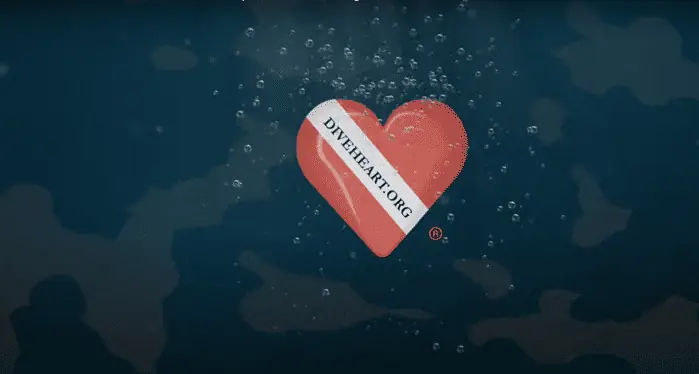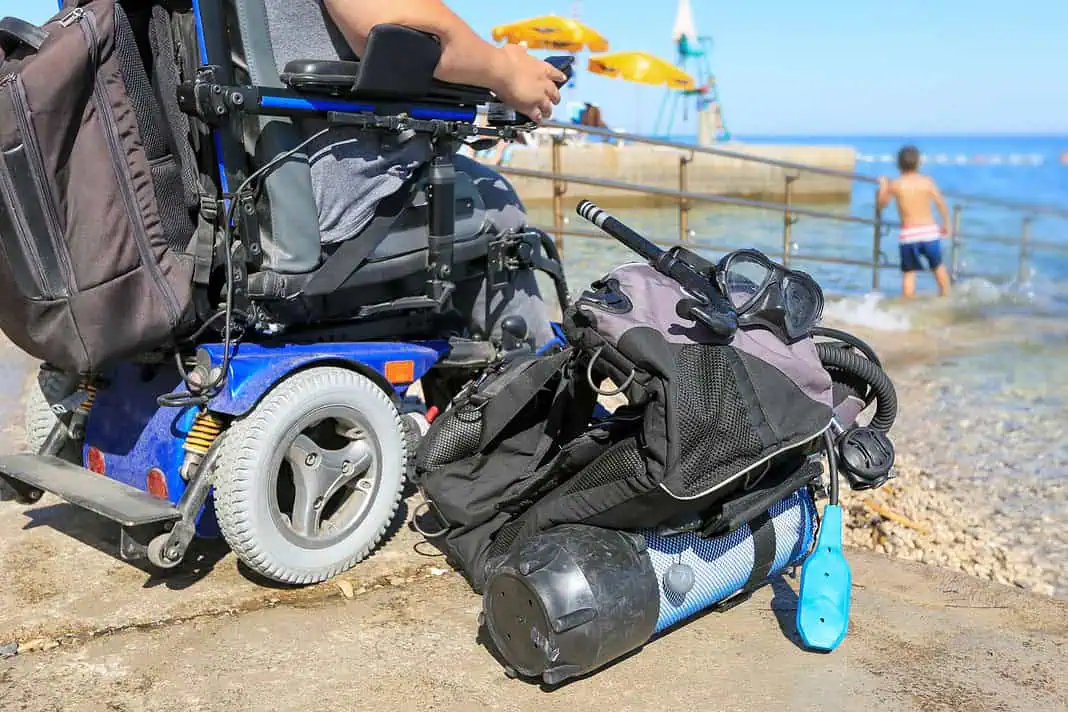Some people ask if adaptive scuba diving exists, and the answer is a resounding yes. Over the last decade or more, adaptive scuba diving has grown exponentially as more people have taken up adaptive diving and its wide range of benefits and freedoms. Never has the saying scuba diving is for everyone held truer!

The Importance of Adaptive Diving
Ask any adaptive diver what the importance of adaptive scuba diving is to them, and you will get as many answers as there are divers. While the benefits vary by individual, they all fall into a few main categories.
Many adaptive divers use diving as a form of physical therapy. Being weightless yet having some resistance from the water can be a great source of physical and functional conditioning for people. This is especially true if they are looking to work on specific areas of the body.
A sense of freedom and movement, again being weightless underwater, gives people a sense of freedom and control over their movement they may no longer have on land. In addition, some adaptive divers report that when scuba diving, they have increased sensation in parts of their body that typically have little to no sensation.
Empowerment and mental health: Adaptive scuba diving often improves participants’ mental health by giving them a sensation of control. Not only are they more in control of their body underwater, but they are also taking part in an adventure sport on their terms.
Adaptive Scuba Diving Programs and Certifications
Historically, very few organizations offer adaptive scuba diving courses, and the leading provider was the International Association of Handicapped Divers IHAD. The leading training agencies only met at the 2018 DEMA show to discuss adaptive divers. Five years later, almost all have some program on their roster of courses.
The types of adaptive dive certifications available are generally split into two groups. The first is standard dive certifications for adaptive divers, such as adaptive diver open water and adaptive diver scuba diver. These broadly cover the same curriculum as the non-adaptive courses. However, there is more of an emphasis on dealing with the additional risk management factors faced by adaptive divers.
The second set of programs and certificates available are tailored for individuals who want to dive with and help adaptive divers. These generally cover various levels and courses, from the adaptive dive buddy specialty to the adaptive diver scuba instructor. These levels go into much more depth about the various challenges adaptive divers face and how the participants can manage those challenges and mitigate risks.
These programs aim to enable the construction of a support network around adaptive divers and their needs. Since adaptive divers need quite a wide range of support, the courses have different levels to deal with the many levels of adaptive divers.
Adaptive Scuba Gear and Techniques
Several gear items and techniques have evolved over the last decade for adaptive scuba diving. Most of these are centered around the mobility issues adaptive divers have getting in and out of the water and those they face in the water.
Many pools now feature full chair lifts or wheelchair ramps for easy and safe access to and from the water. In addition, several dive boats that cater to adaptive divers feature lifts and hoists to allow the divers to be lowered into and out of the water. One of the innovations in this field is creating a special harness with metal D-rings worn under the BCD. This means the diver can connect to the boat hoist system and be easily helped on and off.
Several innovations in in-water propulsion have started to appear. Historically, divers were restricted to webbed gloves. But now, a wide range of products is available for the various situations adaptive divers face. Different leg and arm fins exist to meet the requirements of amputee adaptive divers. In addition, various Diver Propulsion Devices now exist to help divers with lower limb paralysis.
Further innovations are available to address issues like cylinder roll. Small floatation pods can now be attached to the cylinder to stabilize it and prevent it from rolling forward. Gear and technique development is advancing rapidly.
Inclusive Dive Destinations
Regarding dive destinations, almost no destinations are unsuitable for adaptive scuba diving. While some deep sites have very strong currents or are only accessible from inhospitable terrain, which may be unsuitable, no destinations are.
What makes a destination suitable is the availability of Adaptive scuba diving operators who know and understand adaptive divers’ needs and know how to facilitate them in the local environment. The number of dive operators who cater to adaptive divers has blossomed over the last decade. If you search for adaptive-friendly operators, you can find them at almost every dive destination.
Whether it is the Red Sea, Thailand, the Caribbean, or the Great Barrier Reef, almost every location now has operators who cater to adaptive divers. Many agencies allow you to search locations for operators who have properly trained and certified staff on hand to deal with the needs of adaptive divers. Adaptive divers can explore virtually anywhere, just like everyone else!
Inspiring Stories from Adaptive Divers
The number of inspiring adaptive divers is too numerous to count. Many individuals have overcome so much and not let events stop them from pursuing their dreams and living life to the fullest. Take, for instance, Karen Sternfeld, an adaptive athlete who has Multiple Sclerosis (MS). Not to be held back, she started adaptive scuba diving, in addition to being an accomplished triathlete and archer.
Another inspiring example is Former Sgt. Kamron Lopez suffered a serious accident that resulted in paraplegia. At the same time, most people would have given up on their scuba diving dreams, not former Sgt. Lopez. He became an adaptive diver participant with the help of the Dive Pirates Foundation.
You don’t have to look far to find inspiration when it comes to adaptive divers; Chris suffered a spinal injury in 2016 where he lost the use of his legs and the partial use of his arms. Not to be deterred, he has embraced adaptive diving with the help of Dive Heart
While the above are two inspirational examples, they are by no means unique. Many people embrace adaptive scuba diving and all that entails with the help of organizations like Dive Pirates and Dive Heart, to name a few.

